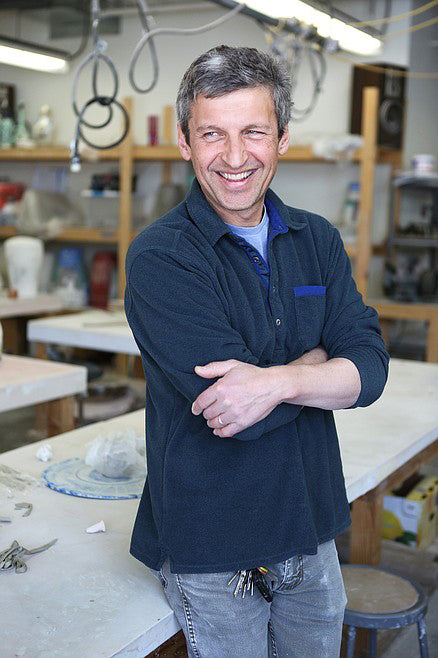
About David Regan
Living Walls Tile is the creation of ceramic artist David Regan, whose sculptural works are held in major institutions including the Metropolitan Museum of Art, the Los Angeles County Museum of Art, and the Mint Museum of Craft + Design. Born in Buffalo, New York, Regan earned his BFA from the Rochester Institute of Technology and his MFA from Alfred University. He completed a residency at the Archie Bray Foundation in Montana, where he continues to live and work. Regan is renowned for his intricately carved porcelain vessels and animal forms, often adorned with detailed sgraffito illustrations that explore themes of nature, consumption, and the cycles of life. His interest in functional design led him to create Living Walls Tile which produces custom wall tiles featuring rich glazes and embossed natural imagery. These tiles embody his vision of integrating fine art with everyday environments.
In addition to his studio work, Regan serves as Associate Professor and Chair of the Art Department at Flathead Valley Community College in Kalispell, Montana, where he shares his expertise with emerging artists.
